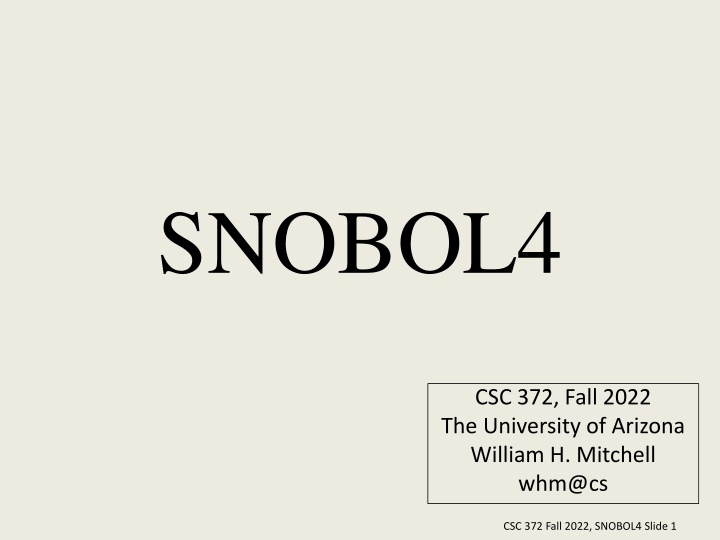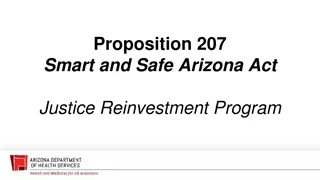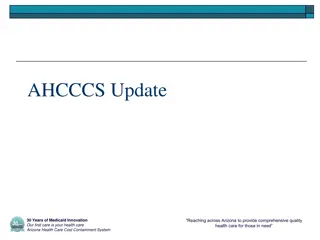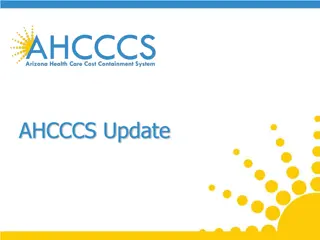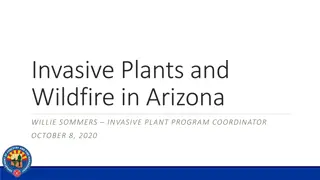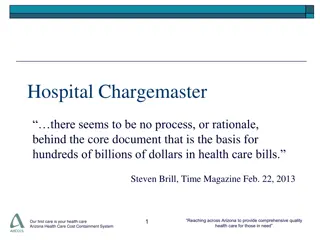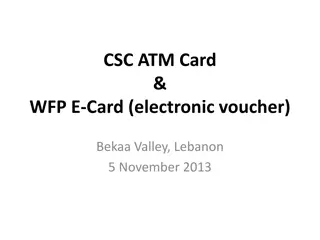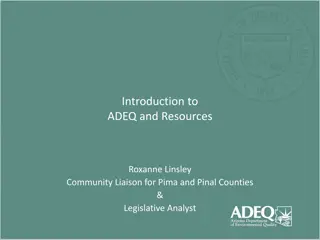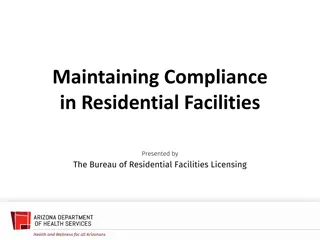History and Features of SNOBOL4 at CSC.372 Fall 2022, The University of Arizona
Developed at Bell Telephone Laboratories, SNOBOL4 is a string-oriented symbolic language known for its unique design decisions including string concatenation and control structures. This powerful language has a rich history and is being explored at The University of Arizona in the Fall of 2022. Dive into the world of SNOBOL4 through informative slides and programming examples showcased in the CSC.372 course.
Download Presentation

Please find below an Image/Link to download the presentation.
The content on the website is provided AS IS for your information and personal use only. It may not be sold, licensed, or shared on other websites without obtaining consent from the author.If you encounter any issues during the download, it is possible that the publisher has removed the file from their server.
You are allowed to download the files provided on this website for personal or commercial use, subject to the condition that they are used lawfully. All files are the property of their respective owners.
The content on the website is provided AS IS for your information and personal use only. It may not be sold, licensed, or shared on other websites without obtaining consent from the author.
E N D
Presentation Transcript
SNOBOL4 CSC 372, Fall 2022 The University of Arizona William H. Mitchell whm@cs CSC 372 Fall 2022, SNOBOL4 Slide 1
A little SNOBOL history Developed in the Programming Research Studies Department at Bell Telephone Laboratories. Their interests: Automata theory, graph analysis, associative processors, high-level programming languages. Were using SCL (Symbolic Communication Language) for symbolic integration, factoring of multivariate polynomials, and analysis of Markov chains. First called SCL7, then SEXI (String EXpression Interpreter). Renamed to SNOBOL, with a backronym StriNg Oriented SymBOlic Language Four versions of SNOBOL from 1963-1966, culminating with SNOBOL4. Ralph Griswold was involved with all, and was lead on SNOBOL4. CSC 372 Fall 2022, SNOBOL4 Slide 2
A line-numbering program Consider a program that reads lines from standard input and writes numbered lines to standard output: % cat lines one two three four five % snobol4 numlines.sno < lines 1: one 2: two 3: three 4: four 5: five Try it! fall22/bin/snobol4 is the executable; examples are in fall22/snobol4. CSC 372 Fall 2022, SNOBOL4 Slide 3
numlines.sno * * Read lines from standard input and write * numbered lines to standard output, a bit * like "cat -n" * n = 1 loop line = input :f(end) output = n ': ' line n = n + 1 :(loop) end CSC 372 Fall 2022, SNOBOL4 Slide 4
Two language design decisions String concatenation: "The decision not to have an explicit operator for concatenation, but instead just to use blanks to separate the strings to be concatenated, was motivated by a belief in the fundamental role of concatenation in a string-manipulation language. The model for this feature was simply the convention used in natural languages to separate words by blanks." Control structures: "We felt that providing a statement with a test-and-goto format would allow division of program logic into simple units and that inexperienced users would find a more technical, highly structured language difficult to learn and use." Source: History of Programming Languages (from ACM SIGPLAN History of Programming Languages Conference, June 1-3, 1978) CSC 372 Fall 2022, SNOBOL4 Slide 5
repl.sno Imagine a program that prompts the user for a repetition count and a string to repeat: $ snobol4 repl.sno How many of what? 5 * ***** How many of what? 7 abc abcabcabcabcabcabcabc How many of what? 11 1011 10111011101110111011101110111011101110111011 CSC 372 Fall 2022, SNOBOL4 Slide 6
repl.sno define('repl(s,n)') :(main) * * function repl(s,n) is like s * n in Ruby * repl eq(n,0) :s(return) repl = repl s n = n - 1 :(repl) main output = 'How many of what?' line = input :f(end) line span(&digits) . count span(' ') rem . string output = repl(string, count) output = :(main) end CSC 372 Fall 2022, SNOBOL4 Slide 7
sumints.sno Imagine a program that finds integers in a body of text and then prints them and their sum: $ cat sumints.1 There were 4 of those, 39 of these, along with 22 oddballs, and 13 were missing. $ snobol4 sumints.sno <sumints.1 The sum of 4, 39, 22 and 13 is 78 CSC 372 Fall 2022, SNOBOL4 Slide 8
sumints.sno, continued * * Read lines of text from standard input, finding and * printing integers and their sum. * read line = input :f(print) loop line break(&digits) span(&digits) . num = :f(read) sum = sum + num nums = nums num ', ' :(loop) print output = eq(sum, 0) 'No numbers found' :s(end) * * nums will look like '10, 7, 181, 12, ' * We want: '10, 7, 181 and 12' * nums arb . fnums ', ' span(&digits) . last ', ' rpos(0) output = 'The sum of ' fnums ' and ' last ' is ' sum end CSC 372 Fall 2022, SNOBOL4 Slide 9
An expression recognizer In formal language theory, a language is a possibly infinite set of strings. A recognizer for a language determines whether a string is in the language. Consider a recognizer for simple arithmetic expressions: Expression? 3*(4+5) OK! Expression? ((x+y)*z)/2+((x))-(q/3)*500 OK! Expression? (x+3)* Nope! Note: we'll not handle whitespace. CSC 372 Fall 2022, SNOBOL4 Slide 10
expr.sno Here is a first version of a recognizer for arithmetic expressions. expr = '7' loop output = 'Expression?' line = input :f(end) line pos(0) expr rpos(0) :f(nope) output = 'OK!' char(10) :(loop) nope output = 'Nope!' char(10) :(loop) end How can we characterize the arithmetic expressions it recognizes? CSC 372 Fall 2022, SNOBOL4 Slide 11
expr.sno, continued Let's go live and extend the expressions that can be handled! $ cat expr.1 75 abc abc+3 10+abc a+b+c a*b+c-d/e -20 10+a-20--x (a-1) -20*(3+4-(x*y)) 3*(4+5) -x*-(-(-(x))) ((x+y)*z)/2+((x))-(q/3)*500 Final result will be in fall22/snobol4/expr.sno CSC 372 Fall 2022, SNOBOL4 Slide 12
Summary of SNOBOL4 pattern matching General form of a pattern match statement: label subject pattern = replacement goto Pattern creation: Alternation (|) and concatenation Value assignment with . and $ Unevaluated expressions Control keywords: &anchor, &fullscan Predefined patterns: arb, bal, fail, fence, null, rem,succeed Functions that produce patterns: any(chars), arbno(pattern), break(chars), len(n), notany(chars), pos(n), rpos(n), rtab(n), span(chars), tab(n) CSC 372 Fall 2022, SNOBOL4 Slide 13
SNOBOL4 patterns vs. regular expressions Number of "words" reported by wc for... Summary of SNOBOL4 patterns on previous slide: Summary of Ruby 2.0 REs in "Pickaxe" book: Microsoft's quick reference for REs: Summary of Icon string scanning in Ruby slides: 54 705 2,091 81 Recognition capability: Regular expressions can recognize strings in a "regular" language type(3) in the Chomsky hierarchy. SNOBOL4 patterns can recognize strings in an "unrestricted" language type(0). Notable: There are few idioms to learn with SNOBOL4 patterns. Why did the industry end up using regular expressions when SNOBOL4 patterns are both simpler and more powerful? CSC 372 Fall 2022, SNOBOL4 Slide 14
SNOBOL4 implementation SNOBOL4 is implemented in SIL SNOBOL Implementation Language. * * Output Procedure * PUTOUT PROC , Output procedure POP (IO1PTR,IO2PTR) Restore block and val VEQLC IO2PTR,S,,PUTV Is value STRING? VEQLC IO2PTR,I,,PUTI Is value INTEGER? RCALL IO2PTR,DTREP,IO2PTR Get data type repr. GETSPC IOSP,IO2PTR,0 Get specifier BRANCH PUTVU Join processing *_ PUTV LOCSP IOSP,IO2PTR Get specifier PUTVU STPRNT IOKEY,IO1PTR,IOSP Perform print AEQLC IOKEY,0,,COMP6 Check status INCRA WSTAT,1 Inc count of writes BRANCH RTN1 Return *_ PUTI INTSPC IOSP,IO2PTR Convert INT. to STRING BRANCH PUTVU Rejoin processing In essence, SIL instructions are instructions for a virtual machine. SNOBOL4 implementation: fall22/snobol4/v311.sil (8,660 non-comment lines) CSC 372 Fall 2022, SNOBOL4 Slide 15
David R. Hanson developed RATSNO, an adaptation of RATFOR to SNOBOL4. Here is assignment 8's seqwords in RATSNO: (not tested!) &anchor = 1; maxlen = 100000 word = input for (;;) { if (word '.') break words = words rpad(word,maxlen) word = input } while (num = input) { if (num '.') { output = line line = } else { words len((num - 1) * maxlen) len(maxlen) . word line = line trim(word) ' ' } } output = line CSC 372 Fall 2022, SNOBOL4 Slide 16
A little more history In 1968 the University of Arizona formed a committee to develop a computer science program. A graduate program with courses from a variety of departments was assembled. Murray Sargent III, a UA optics professor with an interest in programming languages, had visited Bell Labs and knew of the SNOBOL family. Sargent embarked on a one-man recruiting campaign to convince Ralph Griswold to leave Bell Labs and join the University of Arizona. In August of 1971, Ralph Griswold joined the University of Arizona as its first Professor of Computer Science. On his first day, Dr. Griswold arrived to find a line of students waiting outside his office for advising. In his office was a desk, but no chair. CSC 372 Fall 2022, SNOBOL4 Slide 17
SNOBOL4 takeaways I'd like you to know... The syntax for string and pattern concatenation How flow of control works The basic form of pattern matching, with functions and operators that build patterns, and the "dot" notation for extracting parts of matches That there is implicit conversion between integers and strings What the variables input and output represent That SNOBOL4 patterns are capable of recognizing an unrestricted language (type 0 in the Chomsky hierarchy) CSC 372 Fall 2022, SNOBOL4 Slide 18
